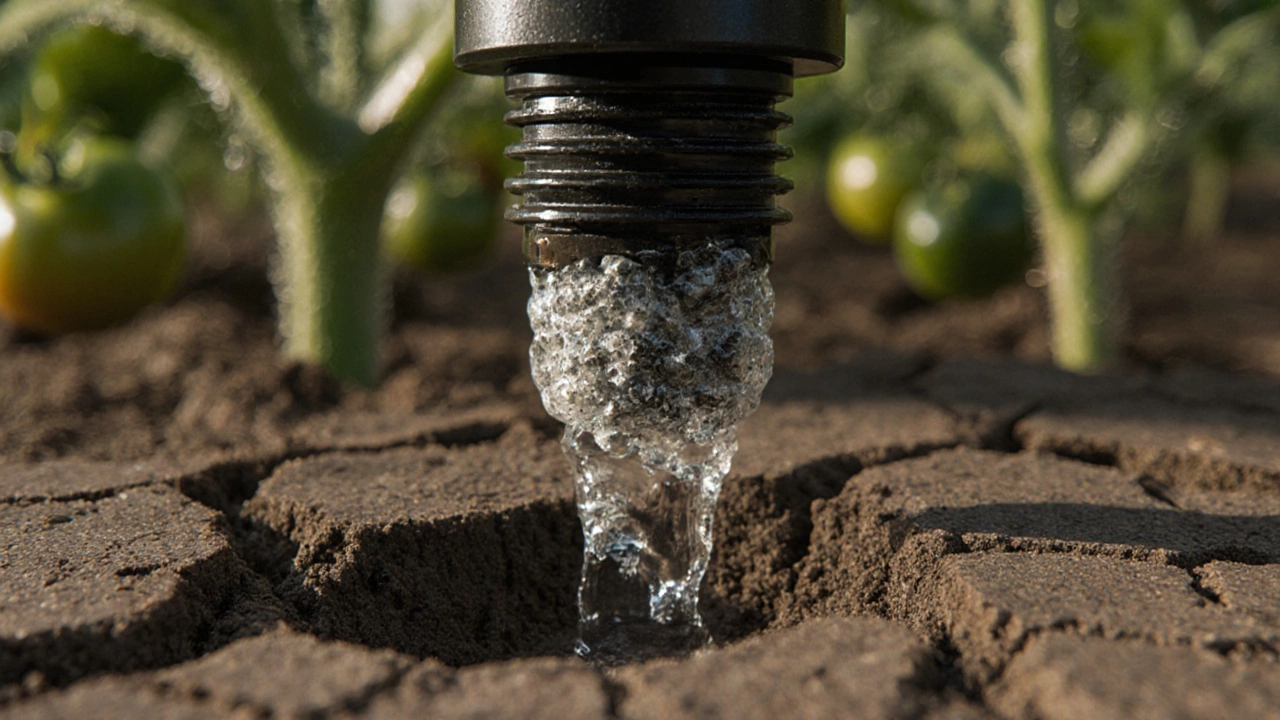Drip emitters are efficient but prone to clogging, uneven flow, and damage. Learn the common problems and how to fix or prevent them to keep your garden healthy and water-efficient.
Drip Emitters: How They Work and Why They Matter for Indian Gardens
When you think about watering your garden, you probably imagine a hose or a sprinkler. But the real game-changer is the drip emitter, a small device that releases water slowly and directly to the base of plants. Also known as drip nozzle or irrigation dripper, it’s the quiet hero behind healthy plants in hot, dry climates like India’s. Unlike sprinklers that lose half their water to evaporation, drip emitters deliver every drop where it’s needed—right at the root zone. This isn’t just efficient; it’s essential in places where water is scarce and electricity costs add up.
Drip emitters are part of a larger system called drip irrigation, a method that uses tubes and emitters to provide precise, low-pressure water delivery. This system works best with garden watering, the practice of supplying water to plants in a controlled, consistent way. In Indian homes and farms, people use drip emitters for everything: potted basil on balconies, rows of tomatoes in kitchen gardens, even fruit trees in small yards. You don’t need a big plot to benefit. Even a single pot with a drip line can save water and keep your herbs alive through summer.
What makes drip emitters so smart is how they match plant needs. A tomato plant might need a 1 GPH emitter, while a succulent does fine with 0.5 GPH. You pick the flow rate based on the plant, the soil, and the heat. No guesswork. No runoff. No puddles. And because water stays at the roots, you reduce mold, pests, and weed growth—problems that plague sprinkler systems in humid monsoon zones. Farmers in Maharashtra and urban gardeners in Bengaluru both swear by them. The best part? They’re cheap, easy to install, and last for years if you clean them once a season.
You’ll find drip emitters in posts about balcony gardens, soil health, and year-round planting because they’re not just a tool—they’re a mindset. They force you to pay attention. To notice which plants dry out faster. To understand how much sun your terrace gets. To stop wasting water on weeds. That’s why they show up in guides about composting, container gardening, and even rabbit-resistant flowers. If you’re trying to grow anything sustainably in India, drip emitters are the quiet upgrade you didn’t know you needed.
Below, you’ll find real-world examples of how people use drip emitters to save time, cut costs, and grow more with less. Whether you’re new to gardening or have been growing veggies for years, there’s something here that’ll make your next watering day easier.
